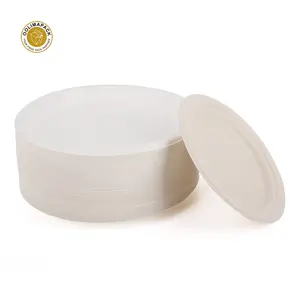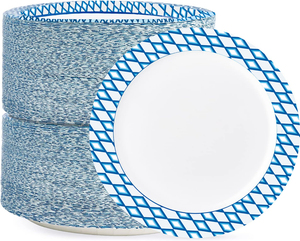
All categories
Featured selections
Trade Assurance
Buyer Central
Help Center
Get the app
Become a supplier

(2652 products available)















































In the realm of dining solutions, medium paper plates have emerged as a convenient and versatile option for serving meals without the hassle of cleanup. These products are particularly popular in settings where ease of use and quick disposal are paramount, such as parties, picnics, and large gatherings. Made from various materials, medium paper plates offer a range of benefits, including lightweight design, portability, and cost-effectiveness. As environmental concerns rise, manufacturers are innovating to create more eco-friendly options, ensuring that medium paper plates remain a staple in both domestic and commercial environments.
The market offers a diverse array of medium paper plates, each tailored to specific needs and preferences. Common types include paper plates, plastic plates, and biodegradable plates. Paper plates are favored for their lightweight and affordable nature, making them ideal for casual gatherings. Plastic plates provide durability and resistance to moisture, suitable for outdoor events where sturdiness is required. Biodegradable plates, often made from materials like bamboo or sugarcane, cater to environmentally conscious users by offering compostable options. Each type of medium paper plates is designed to meet particular demands, ensuring that users can select the most appropriate option for their event.
medium paper plates are designed to offer convenience and efficiency in various dining scenarios. They eliminate the need for washing, saving time and effort in cleaning up after meals. Features such as reinforced edges and flexible designs enhance usability by providing a sturdy platform for food items. Some medium paper plates come with compartments, allowing for the separation of different food types, which is particularly useful for buffets and catered events. Additionally, advancements in material technology have led to heat-resistant options, enabling the safe serving of hot dishes without compromising the integrity of the plate. The lightweight nature of medium paper plates also facilitates easy transportation and storage.
The composition of medium paper plates varies significantly depending on the intended use and environmental considerations. Traditional paper plates are made from wood pulp, often treated with coatings to enhance moisture resistance. Plastic plates are typically manufactured from polymers like polystyrene or polypropylene, known for their strength and durability. Biodegradable options utilize plant-based materials such as cornstarch or bagasse, offering a sustainable alternative to conventional products. Additives may be incorporated to improve functionality, such as heat resistance or increased rigidity. The choice of materials influences the performance characteristics of medium paper plates, allowing users to select options that align with their specific requirements.
To maximize the benefits of medium paper plates, it's essential to understand their capabilities and limitations. For optimal use, choose the appropriate type based on the nature of the event and the food being served. Ensure that plates are not overloaded to prevent bending or breaking, especially with heavier dishes. Utilize compartmentalized designs for meals with multiple components to maintain organization and presentation. For environmentally conscious events, consider using biodegradable medium paper plates and promote responsible disposal practices. Educating attendees on recycling or composting can significantly reduce the environmental impact associated with disposable dining solutions.
When selecting medium paper plates for your event, it's important to consider the nature of the occasion and the type of food you'll be serving. Different materials offer varying degrees of durability and environmental impact, making it essential to match the plate type with your specific needs. For instance, paper medium paper plates are ideal for light snacks or finger foods, while plastic options may be better suited for heavier meals due to their sturdiness. Additionally, if sustainability is a priority, opting for biodegradable medium paper plates can help minimize environmental impact. Evaluating these factors will ensure that you choose the most appropriate disposable plates for your event.
As concerns about environmental sustainability grow, understanding the impact of medium paper plates is crucial. Traditional plastic plates can contribute significantly to waste, as they are not biodegradable and can persist in landfills for years. In contrast, biodegradable medium paper plates, made from materials like bagasse or cornstarch, offer a more eco-friendly alternative. These plates break down naturally over time, reducing the overall environmental footprint. It's important to verify the compostability claims of these products to ensure they meet your sustainability goals. By choosing the right type of medium paper plates, you can align your event with environmentally conscious practices.
Customization is a key feature that can enhance the appeal of medium paper plates at any event. Many manufacturers offer options for personalizing plates with logos, designs, or specific colors to match your theme. This can be particularly beneficial for corporate events or branded gatherings, where presentation plays a significant role. Custom medium paper plates not only add a unique touch to the event but also serve as a marketing tool, reinforcing brand visibility. Consider working with suppliers who can accommodate your customization needs to create a memorable dining experience.
Biodegradable medium paper plates are often made from renewable resources such as bagasse, bamboo, and cornstarch. These materials are chosen for their ability to decompose naturally, making them a sustainable choice for eco-friendly dining solutions. Bagasse, a byproduct of sugarcane processing, is particularly popular due to its strength and compostability.
When selecting medium paper plates for hot foods, look for options that are heat-resistant and designed to withstand high temperatures. Some plates are coated or reinforced to prevent warping or melting when exposed to heat. It's essential to review the product specifications and choose plates that explicitly state their suitability for hot dishes.
Yes, some medium paper plates are specifically designed to be microwave-safe. These plates are made from materials that can endure microwave heating without releasing harmful chemicals or losing structural integrity. Always check the manufacturer's guidelines to ensure the plates are safe for microwave use.
Recycling medium paper plates depends on the material they are made from. Paper plates may be recyclable if they are clean and free from coatings or food residues. However, plastic plates often require specific recycling processes and may not be accepted by all recycling facilities. It's important to follow local recycling guidelines to determine the best disposal method.
Compartmentalized medium paper plates offer several benefits, including the ability to separate different food items, which enhances presentation and prevents flavors from mixing. This feature is particularly useful for buffets and catered events where guests may want to sample various dishes. Additionally, compartmentalized plates can help manage portion sizes and improve overall dining organization.